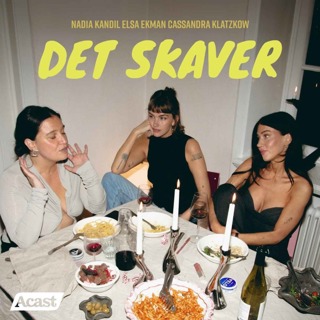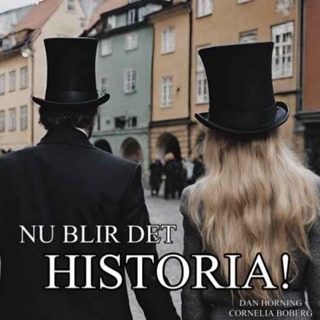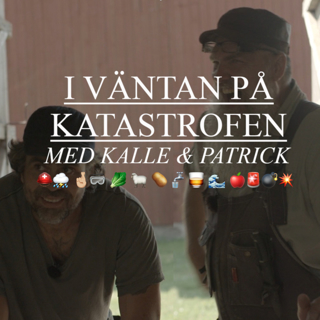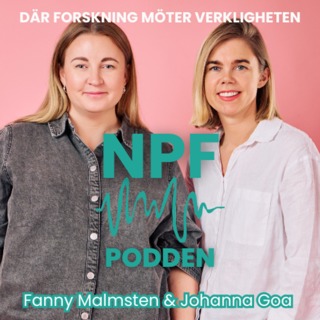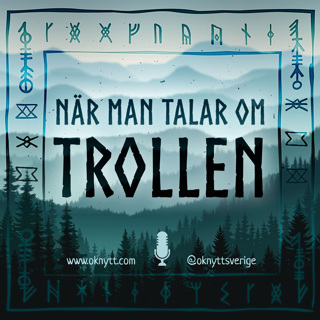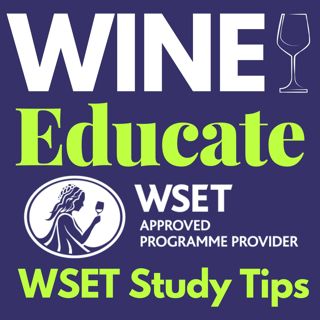
30. Inside the WSET Level 3 Exam: Tasting + Theory Breakdown
Resources & Links Sign up for the Wine Educate Newsletter: www.wineeducate.com/newsletter-signup Launchpad: Level 3 Prep Course: www.wineeducate.com/launchpad How to Contact Us Website: www.wineeducate.com Email: joanne@wineeducate.com Instagram & Facebook: @wineeducate In this episode of Wine Educate, host Joanne Close takes the mystery out of the WSET Level 3 exam. She explains exactly how the tasting and theory sections are structured, how grading works, and what to focus on to earn the most points—whether you're aiming to pass or go for that distinction. Joanne shares practical advice from her years of administering exams and guiding students, including common pitfalls to avoid and how to make the most of your exam strategy. What's in This Episode? Understanding the Tasting Exam You'll evaluate two wines—one red and one white—in 30 minutes. WSET provides general parameters, and your instructor selects the wines. The red wine carries 21 marks (tannin adds an extra point), and the white 20. You must use WSET Level 3 SAT formatting and vocabulary to earn full marks. How Tasting Is Scored Marks are awarded, not taken away—so write down what you smell and taste. Stick to language found on the SAT card to align with the official answer key. Develop a system to avoid forgetting basic but essential points (like dryness). What to Know About the Theory Exam This two-hour exam includes 50 multiple choice questions and 4 short written answers. Both sections are in the same exam paper—plan your time accordingly. One essay will be on either sparkling or fortified wine, so study both. Grading & Passing Requirements You must score at least 55% in both tasting and theory to pass. To pass with merit, you need 65–79%. To pass with distinction, you need 80% or more in both sections (and no section below 65%). How Retakes Work If you fail one section, you only need to retake that portion. If you fail both, you must retake the entire exam. Even if you pass both sections on separate sittings with distinction-level marks, the highest overall grade possible is "pass with merit." Need Additional Support? Joanne offers in-person and online WSET Level 3 tasting workshops and prep resources year-round. Resources & Links Sign up for the Wine Educate Newsletter: www.wineeducate.com/newsletter-signup Launchpad: Level 3 Prep Course: www.wineeducate.com/launchpad How to Contact Us Website: www.wineeducate.com Email: joanne@wineeducate.com Instagram & Facebook: @wineeducate
3 Apr 12min

29. How to Prepare for WSET Level 3 (Without Overwhelm)
Resources & Links Sign up for the Wine Educate Newsletter: www.wineeducate.com/newsletter-signup Launchpad: Level 3 Prep Course: www.wineeducate.com/launchpad How to Contact Us Website: www.wineeducate.com Email: joanne@wineeducate.com Instagram & Facebook: @wineeducate In this episode of Wine Educate, host Joanne Close helps you get ready for WSET Level 3 with a practical, encouraging guide to prep—without the panic. Whether you've already signed up or you're just thinking about it, Joanne breaks down exactly what to focus on before the course begins. From reviewing your Level 2 materials to creating a realistic study plan, she shares mindset strategies and tactical tips to build confidence and avoid overwhelm. What's in This Episode? 1. Mastering Level 2 Knowledge It's assumed knowledge for Level 3—review it thoroughly. Flashcards, textbook content, and key terms like carbonic maceration and traditional method should be second nature. Don't try to learn Level 2 and Level 3 content at the same time. 2. Download and Use the Specification The WSET Specification is your guide to what will be tested. Print it out and use it to create your own study guide. If something's not listed in the specification, it won't be on the exam. 3. Get the Book Early Order your Level 3 textbook as soon as possible, even if your course is months away. Read it once straight through without taking notes—just get familiar with the structure and content. Tip: Have the book spiral bound so it lays flat and is easier to use. 4. Create a Realistic Study Timeline Plan your study time in advance, especially if you work long or irregular hours. Be honest with yourself about when and how often you'll be able to study. Consistent effort over time is key to avoiding last-minute stress. 5. Mindset for Success This course requires a steady, long-term approach. Identify how you learn best—visual, comparative, solo study—and use those tools. You may feel lost in the early weeks, but by class 4 or 5, things usually start to click. 6. Be Patient with Yourself You don't have to understand everything right away. Keep showing up and trust the process. Learning how to study again takes time, especially if you've been out of school. Give yourself permission to take it slow and steady. Need Additional Support? Joanne offers online WSET Level 3 prep courses throughout the year, including Zoom sessions and structured guidance. Resources & Links Sign up for the Wine Educate Newsletter: www.wineeducate.com/newsletter-signup Launchpad: Level 3 Prep Course: www.wineeducate.com/launchpad How to Contact Us Website: www.wineeducate.com Email: joanne@wineeducate.com Instagram & Facebook: @wineeducate
1 Apr 12min

28. WSET Level 3: What to Expect from the Course and the Exam
Resources & Links Sign up for the Wine Educate Newsletter: www.wineeducate.com/newsletter-signup Launchpad: Level 3 Prep Course: www.wineeducate.com/launchpad How to Contact Us Website: www.wineeducate.com Email: joanne@wineeducate.com Instagram & Facebook: @wineeducate Thinking about taking WSET Level 3 but not sure what you're signing up for? In this episode, host Joanne Close walks you through how the course is structured, what the exam includes, and how different course formats (in-person, online, accelerated) might affect your learning experience. If you've been on the fence or want to know what's expected before you enroll, this episode will give you a clear picture. What's in This Episode? 1. What the Course Covers Deeper exploration of viticulture and winemaking Key grape varieties and wine styles Major wine-producing regions and how natural and human factors impact wine Expanded SAT tasting technique with more complexity Focus on interconnecting concepts for essay writing and tasting 2. Course Formats and Scheduling Standard Format: One 2-hour class per week for 15 weeks Accelerated Format: Two classes per week over 8 weeks Online Option: 9-week online modules with an in-person tasting calibration and exam 3. Exam Structure Tasting Exam: 30 minutes to assess two wines (white and red) Theory Exam: 2 hours with 50 multiple choice questions and 4 short essay-style questions Written portion is in-depth—expect around eight printed pages You must take the exam in person due to the tasting component 4. Why Preparation Before Class Matters Regardless of format, students need to prepare before the first class Trying to catch up between sessions can create panic and stress Students are often surprised by how quickly the course moves 5. The Importance of Class Participation Level 3 is discussion-heavy—expect to speak and be questioned Instructors act more like coaches, guiding you through analysis and critical thinking You'll be asked "why" constantly to build your ability to explain and connect concepts 6. Understanding vs. Memorizing Level 3 success is about comprehension and application, not just rote memorization The more prepared you are ahead of time, the more you'll get from the in-class experience Next Episode – Episode 29 Joanne shares practical strategies for preparing for WSET Level 3 without feeling overwhelmed. Learn how to set yourself up for success before the course even begins. Resources & Links Sign up for the Wine Educate Newsletter: www.wineeducate.com/newsletter-signup Launchpad: Level 3 Prep Course: www.wineeducate.com/launchpad How to Contact Us Website: www.wineeducate.com Email: joanne@wineeducate.com Instagram & Facebook: @wineeducate
27 Mars 9min

27. The Big Jump – Why WSET Level 3 Feels So Much Harder Than Level 2
Resources & Links Sign up for the Wine Educate Newsletter: www.wineeducate.com/newsletter-signup Launchpad: Level 3 Prep Course: www.wineeducate.com/launchpad How to Contact Us Website: www.wineeducate.com Email: joanne@wineeducate.com Instagram & Facebook: @wineeducate Episode Summary: In this first episode of a brand-new series, Joanne dives into what makes the leap from WSET Level 2 to Level 3 so significant—and why it often catches students off guard. With a global pass rate hovering around 50%, Level 3 is a challenging course, but it's completely doable with the right preparation and mindset. Joanne shares key insights on the differences between Levels 1, 2, and 3, and explains why early study habits and clear structure can make all the difference. Whether you're prepping for Level 3 now or just beginning your wine education journey, this episode is packed with tips to help you stay focused and motivated. What You'll Learn in This Episode: Why the jump from Level 2 to Level 3 is such a challenge How each WSET level builds on different types of learning: Level 1 = What Level 2 = How Level 3 = Why Recap: The exam is passable if you understand the expectations early on The course is comprehensive and structured—but you'll need time outside of class to absorb and review How to prepare - we will talk about that next week. Subscribe so you don't miss it. What makes Level 3's exam format more demanding (hello, essays and tasting!) Common pitfalls students face—and how to avoid them Why structure, feedback, and community are key to success Encouragement for all wine students: these lessons are helpful even if you're not at Leve 3 Next Week: In Episode 28, Joanne breaks down exactly what to expect from the WSET Level 3 course itself—so you can walk in with confidence. Be sure to subscribe so you don't miss it! Resources & Links Sign up for the Wine Educate Newsletter: www.wineeducate.com/newsletter-signup Launchpad: Level 3 Prep Course: www.wineeducate.com/launchpad How to Contact Us Website: www.wineeducate.com Email: joanne@wineeducate.com Instagram & Facebook: @wineeducate
25 Mars 10min

26. WSET Level 3 Bootcamp - Lessons from the Vineyard (Part 2)
Resources & Links Sign up for the Wine Educate Newsletter: www.wineeducate.com/newsletter-signup Level 3 Bootcamp: www.wineeducate.com/trips How to Contact Us Website: www.wineeducate.com Email: joanne@wineeducate.com Instagram & Facebook: @wineeducate Episode Description In this episode of Wine Educate, host Joanne Close continues the Lessons from the Vineyard series, focusing on winemaking (vinification) at Château Camplazens. During the WSET Level 3 Bootcamp, students got a firsthand look at the winery's fermentation process, barrel aging choices, and the fascinating mobile bottling van. Each lesson is tied to a Level 3 essay question, helping students apply their vineyard experiences to WSET exam prep. Joanne also shares details about the next Level 3 Bootcamp, happening April 6–11, 2026. What's in This Episode? 1. Understanding Extraction in Fermentation Cement fermentation tanks – why they're used and how they're epoxy-lined to remain inert. Punching down on a mechanized track – a technique used at the winery to control extraction efficiently. WSET Level 3 Essay Question: Name four processes for increasing extraction during fermentation in red wine production. Possible answers: Punching down, pumping over, rack and return, rotary fermenters. 2. Barrel Aging and Oak Selection Visiting the barrel room, where students observed different barrels, oak sources, and toasting levels. How the winery uses first, second, and third-year barrels to influence the wine's complexity. A fun moment: One student wished she could bottle the scent of the barrel room as a perfume – Eau de Oak! WSET Level 3 Essay Question: Name two ways aging wine in barrels affects the wine. Possible answers: Softens tannins through oxidation and adds oak flavors (cedar, spice, smoke). 3. The Magic of the Mobile Bottling Van A rare opportunity – the group got to see the mobile bottling van in action! Why medium-sized wineries hire mobile bottling companies instead of owning expensive bottling lines. Inside the bottling truck: Watching wine move from tanks to labeled, sealed, and boxed bottles—like a Willy Wonka factory for wine! WSET Level 3 Essay Question: What are the advantages of using a screw cap over a cork for rosé wine? Possible answers: Screw caps prevent cork taint (TCA) and preserve aromatic fruit flavors better for young wines. Next WSET Level 3 Bootcamp – April 6–11, 2026 The next Bootcamp dates are confirmed! Limited to 12 participants for an intimate and immersive learning experience. Sign up at: www.wineeducate.com/trips Resources & Links Sign up for the Wine Educate Newsletter: www.wineeducate.com/newsletter-signup Level 3 Bootcamp: www.wineeducate.com/trips How to Contact Us Website: www.wineeducate.com Email: joanne@wineeducate.com Instagram & Facebook: @wineeducate 🎧 Thanks for listening!
20 Mars 11min

25. WSET Level 3 Bootcamp - Lessons from the Vineyard (Part 1)
Resources & Links Sign up for the Wine Educate Newsletter: www.wineeducate.com/newsletter-signup Level 3 Bootcamp: www.wineeducate.com/trips How to Contact Us Website: www.wineeducate.com Email: joanne@wineeducate.com Instagram & Facebook: @wineeducate In this episode of Wine Educate, host Joanne Close shares insights from the WSET Level 3 Bootcamp in the South of France. After an incredible week at Château Camplazens, Joanne reflects on key vineyard lessons that bring WSET theory to life. She explores how studying viticulture in the field helps Level 3 students prepare for essay questions, how natural factors like winds, soil, and climate impact grape growing, and why experiencing a vineyard firsthand can be a game-changer for wine students. She also announces the 2026 WSET Level 3 Bootcamp, set for April 6–11, and explains why it's moving to the spring instead of February. What's in This Episode? 1. Why Vineyard Learning Is Essential for WSET Students Seeing viticulture concepts firsthand makes studying more effective. Visiting any vineyard near you can help cement key WSET principles. 2. The Mediterranean Climate & Organic Wine Production Château Camplazens sits in a warm Mediterranean climate, which impacts grape growing. Key learning: Low rainfall and strong winds reduce disease pressure, making organic viticulture easier. Essay Question Example: Why is a Mediterranean climate well-suited for producing organic wines? 3. Observing Soil Variation from the Tower The bare vines in March revealed the vineyard's different soil types (limestone, clay, gravel). Different soil parcels are harvested separately to increase complexity in the wines. From the tower, students could see the Pyrenees, the Mediterranean, and the Black Mountains, reinforcing how geography impacts wine. 4. Understanding Frost Risk & Vineyard Site Selection Even in a warm Mediterranean climate, frost can still be a risk in low-lying vineyard areas. Lesson: Cold air sinks, and certain vineyard sections are more frost-prone. Essay Question Example: A vineyard is being planted in a frost-prone area. Name two things that can be done during vineyard layout and planting to help mitigate frost. 5. Climate Change & Heat-Resistant Grapes Winemakers in Roussillon are experimenting with new heat- and drought-resistant varieties. Example: Assyrtiko, a grape from Greece, is being trialed in the South of France. Essay Question Example: How are vines trained in La Mancha, and why? Upcoming WSET Level 3 Bootcamp – April 6–11, 2026 Next year's Bootcamp is moving to April (instead of February) for better weather and longer daylight hours. Limited to 12 participants for a more immersive experience. Learn more and reserve your spot WSET Level 3 Bootcamp - South of France 2026 | Wine Educate Final Thoughts Studying vineyards on-site helps Level 3 students apply WSET knowledge to real-world scenarios. The next episode (Part 2) will dive deeper into more vineyard lessons from the trip! Resources & Links Sign up for the Wine Educate Newsletter: www.wineeducate.com/newsletter-signup Level 3 Bootcamp: www.wineeducate.com/trips How to Contact Us Website: www.wineeducate.com Email: joanne@wineeducate.com Instagram & Facebook: @wineeducate 🎧 Thanks for listening!
18 Mars 16min

24. The Three Best Wine Books You Will Ever Own!
Resources & Links Sign up for the Wine Educate Newsletter: www.wineeducate.com/newsletter-signup How to Contact Us Website: www.wineeducate.com Email: joanne@wineeducate.com Instagram & Facebook: @wineeducate Episode Description In this episode of Wine Educate, host Joanne Close shares the three essential wine books that have been her go-to resources throughout her 20+ years of WSET education. Whether you're a beginner or an advanced student, these books will help you deepen your knowledge of wine, viticulture, winemaking, and regional geography. Joanne discusses why these books are must-haves, how to use them effectively, and what makes them invaluable for WSET students at all levels. What's in This Episode? 1. The Oxford Companion to Wine (4th Edition) – Edited by Jancis Robinson & Julia Harding The most comprehensive wine reference book available, covering history, viticulture, winemaking, and key wine terms. First published in 1994, now in its fourth edition (2023) with hundreds of new entries, including "celebrity wine," "heat wave," "low-intervention wine," and more. How to use it: A dictionary-style reference to quickly look up unfamiliar wine terms like malolactic conversion, AVAs, and wine faults. Where to find it: Available on Amazon, thriftbooks.com, and other major booksellers. 2. The World Atlas of Wine (8th Edition) – Jancis Robinson & Hugh Johnson First published in the 1960s, this book remains the definitive wine atlas, featuring detailed maps of the world's wine regions. The altitude and topography maps help students visualize key wine-growing areas. How to use it: Essential for Level 2 & Level 3 students to memorize major cities, rivers, and wine regions. Also includes fundamental wine knowledge, making it an excellent reference for beginner and intermediate students. 3. Understanding Wine Technology (4th Edition) – David Bird MW A technical yet accessible book that simplifies complex winemaking processes, chemistry, and equipment. Originally written to support Level 3 students, this book is a perfect supplement to the WSET study materials. How to use it: Great for understanding fermentation, stabilizing agents, wine faults, and bridging the gap between science and practical wine knowledge. The latest edition (2022) is co-authored by a French winemaker based in Portland for even more real-world insight. Final Thoughts These three books should be on every wine student's nightstand—they provide the foundation for serious wine study and exploration. There are many other amazing wine books out there, and Joanne will cover more in future episodes! Have a favorite wine book? Share it on Instagram @wineeducate! Resources & Links Sign up for the Wine Educate Newsletter: www.wineeducate.com/newsletter-signup How to Contact Us Website: www.wineeducate.com Email: joanne@wineeducate.com Instagram & Facebook: @wineeducate
13 Mars 8min

23. Understanding Primary, Secondary, and Tertiary Aromas & Flavors
Resources & Links Sign up for the Wine Educate Newsletter: www.wineeducate.com/newsletter-signup How to Contact Us Website: www.wineeducate.com Email: joanne@wineeducate.com Instagram & Facebook: @wineeducate Episode Description In this episode of Wine Educate, host Joanne Close explores the essential primary, secondary, and tertiary aromas and flavors in wine. Identifying and categorizing these aromas is a crucial skill for WSET Level 3 students, as they play a key role in tasting notes and determining a wine's development. Joanne breaks down how these aromas are classified, why they matter for the Systematic Approach to Tasting (SAT), and common student struggles when learning to differentiate them. She also shares practical study tips and wine examples to help students sharpen their tasting skills. Follow along with Level 3 Bootcamp: Instagram @wineeducate (#L3Boot2025) Wine Educate Newsletter – Sign up for exclusive content and class updates. What's in This Episode? 1. WSET Level 3 Bootcamp Update Joanne is wrapping up her Level 3 Bootcamp and heading back home. If you're interested in future bootcamps or wine trips, subscribe to the newsletter for updates. 2. Why Understanding Aromas & Flavors Matters Primary, secondary, and tertiary aromas and flavors are crucial for describing wines accurately. In WSET Level 3, identifying tertiary aromas (or the lack of them) determines whether a wine is youthful or developing. Wines can have different combinations of these aromas—some may be all primary, while others may show secondary and tertiary characteristics. 3. Primary Aromas & Flavors Source: Directly from the grape variety and fermentation process. Categories: Floral: Elderflower, violet, rose, chamomile Herbaceous: Grass, green bell pepper, asparagus Fruit: Citrus, red fruit, black fruit, tropical, dried Spice: Black pepper Examples: Sauvignon Blanc: Gooseberry, passion fruit, elderflower Cabernet Sauvignon (unoaked): Black currant, green bell pepper, mint Syrah (unoaked): Blackberry, black pepper, violet 4. Secondary Aromas & Flavors Source: Derived from fermentation and maturation choices (winemaking techniques). Key Influences: Lees Contact: Biscuit, bread, dough, brioche, yogurt Malolactic Conversion (MLF): Butter, butterscotch, cream Oak Aging: Vanilla, coconut, smoke, toast, clove, cedar, coffee, chocolate Examples: Champagne: Strong lees influence due to extended time on lees. Oaked Chardonnay: MLF (butter) + Lees influence (biscuit, brioche) + Oak (vanilla, toast, baking spice) Grand Cru Classé Bordeaux: Clear oak influence (cedar, tobacco, vanilla, spice) 5. Tertiary Aromas & Flavors Source: Develop due to bottle aging or oxidation in oak. Types of Aging: Oxidative Maturation (oak aging): Walnut, coffee, caramel Bottle Aging (anaerobic development): Leather, mushroom, tobacco, petrol, honey Examples: Aged Riesling: Petrol, honey, dried apricot Aged Bordeaux: Cedar, tobacco, earth Vintage Port: Dried fruit, fig, nutty aromas 6. Common Student Struggles & Tips Practice is key—many students struggle because they are not used to focusing on aromas in daily life. Use your SAT card—but be specific! Writing "citrus" won't earn points; list lemon, lime, or grapefruit instead. Tertiary aromas can be tricky—some honey aromas in botrytized wines (e.g., Sauternes, Tokaji) are primary, not tertiary. Dried fruit can be primary or tertiary—depends on how the wine was made (e.g., Amarone uses dried grapes but is still youthful). Group tasting is essential—try tasting older wines together to identify tertiary characteristics. Final Thoughts & Study Tips Calibrate your palate—practice with study groups and compare tasting notes. Don't rush—building aroma recognition takes time and repetition. Subscribe to the newsletter for updates on classes and wine trips. Resources & Links Sign up for the Wine Educate Newsletter: www.wineeducate.com/newsletter-signup How to Contact Us Website: www.wineeducate.com Email: joanne@wineeducate.com Instagram & Facebook: @wineeducate
11 Mars 15min



